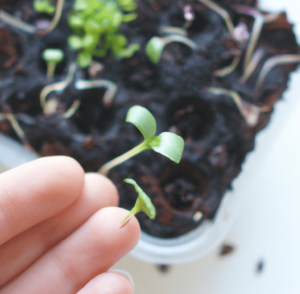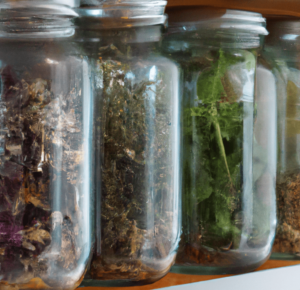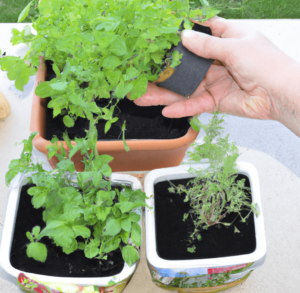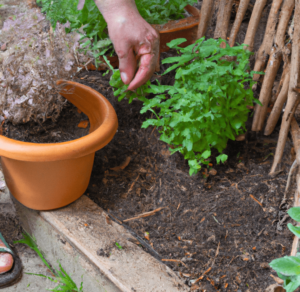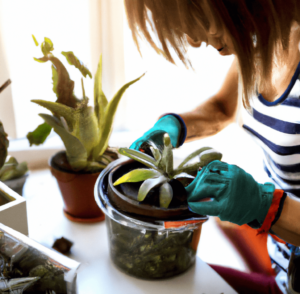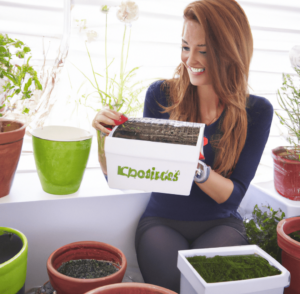Gardening allows us to stay in touch with nature and add a dash of greenery to our residences and neighborhoods. Extreme climates, where temperatures, soil, and other factors are not favorable for plant growth, can make gardening difficult. If you want to learn about gardening in extreme climates, here’s what you need to know.
Understanding Your Climate
Learning about gardening in extreme climates is understanding your current climate. The types of plants you can cultivate, the time of their growth and the general health of your garden can all be significantly impacted by the climate.
- Season: Your garden’s success is greatly influenced by the seasons. You can decide when to plant and what kinds of plants will thrive in your location by knowing what the last frost dates, average temperature, and rainfall are in your area.
- Temperature: When gardening, it’s crucial to take your local average temperature into account. It’s crucial to select plants that are suitable to the environment in your location because different plants require different temperatures. You may choose when to start seeds indoors and when to move them outdoors by knowing the typical temperature.
- Plants: Your climate will have a big impact on the kinds of plants you decide to grow. While certain plants can only thrive during certain seasons, others may need a certain range of temperatures. To guarantee that your plants thrive and yield an abundance of flowers or fruit, it’s crucial to pick ones that are compatible with your climate.
- Garden: When designing your garden, it’s crucial to take the local climate into account and select plants that will thrive there. When selecting plants for your garden, take into account variables like the amount of sunlight, the type of soil, and the usual temperature. Your garden will remain prolific and healthy as a result for many years.
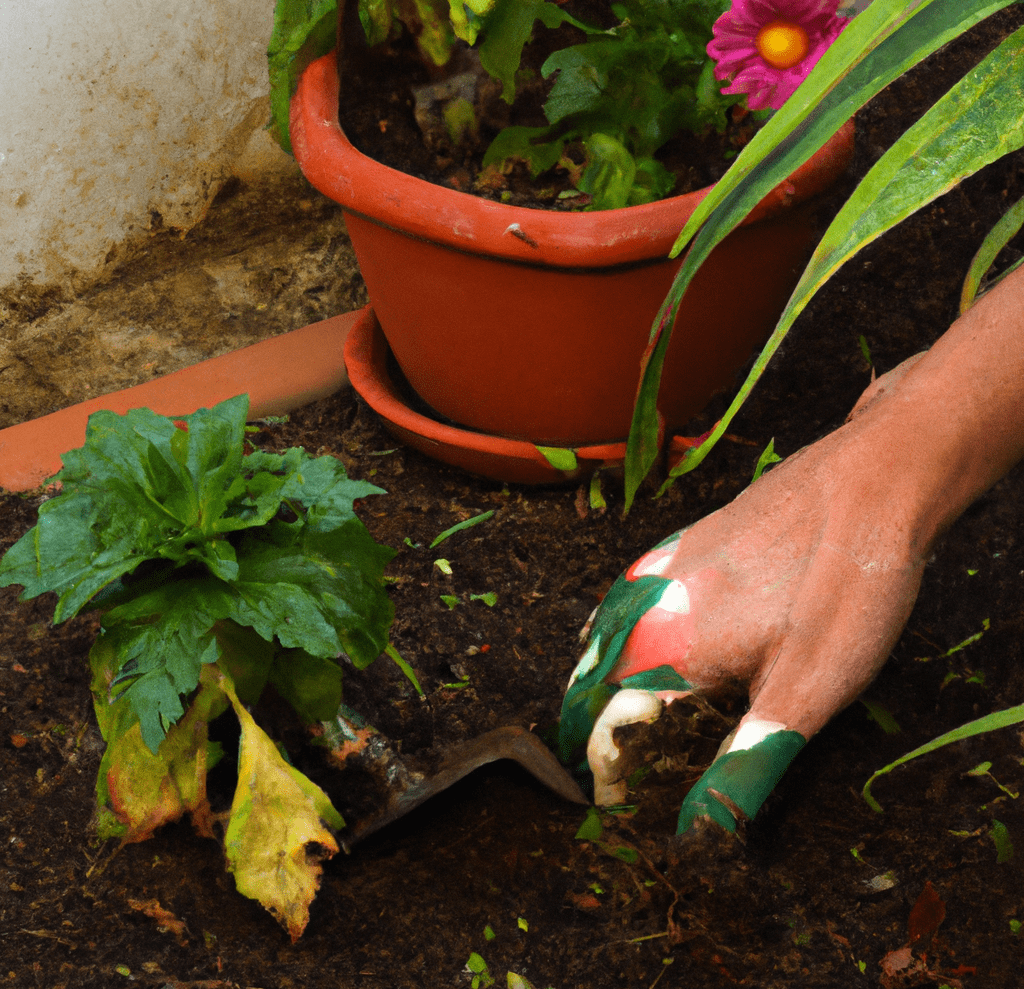
Understanding the Unique Weather Patterns and Conditions That Affect Gardening in Your Area
Successfully gardening in extreme climates is more than just reading through gardening guides and requires a thorough understanding of the local meteorological conditions and trends that affect gardening:
- Do your research: Learn about the regular rainfall patterns in your location. By knowing when and how much rain falls there typically, you can plan to water your garden more effectively. If there is a drought in your location, you might need to water your plants more frequently or buy plants that can withstand the drought.
- Monitor the temperature: Extreme heat or cold can harm plants, so it’s crucial to monitor the weather and, if required, take precautions to safeguard your garden. On especially hot days, this can entail offering shade or covering plants with a covering.
- Utilize natural water resources as much as possible: If you live in a location with a lot of rain, think about collecting rainwater in barrels to use in your garden rather than relying on tap water. Your water cost can be decreased as a result.
- Apply mulch: Mulch aids in moisture retention in the soil, lowering the quantity of water your plants require and assisting in shielding their roots from temperature changes.
Researching Plants That Are Well-Suited to Your Climate
Whether you’re gardening in small spaces or gardening in extreme climates, research is essential.
To get started, it can be useful to learn about the particular environment in your area and the kinds of plants that commonly thrive there. Choosing plants that are hardy enough to withstand the tough conditions is vital if, for instance, you reside in a region with a cold winter environment. Evergreens, conifers, and perennials like hellebores and snowdrops are a few examples of plants that may survive the winter.
On the other hand, if you reside in a warmer region, you might want to concentrate on growing plants that can resist the summer’s intense heat and dry circumstances. For this kind of climate, it’s best to use perennials that can withstand drought, cacti, and succulents.
Planning and Designing Your Garden
Creating a garden plan is essential in gardening in extreme climates. You’ll need to think about the following:
- Your garden’s soil serves as its foundation and is essential to the health and development of all of your plants: Choose plants that will flourish in the sort of soil you have because different plants have varied soil requirements. Compost, mulch, or other organic matter can be added to your soil to help it retain moisture and nutrients.
- Your garden’s main attraction, plants come in a wide range of forms, dimensions, and hues: Consider the light and water needs of the plants you choose, as well as the local environment and temperature. Make sure to select plants that are appropriate for the circumstances in your garden and arrange them according to their requirements.
- When planning and constructing your garden, it’s crucial to take the weather and temperature into account: It’s crucial to choose plants that will flourish in your location because different plants have varied temperatures and environmental requirements.
Choosing the Right Location for Your Garden
Choosing the ideal site is one of the most important considerations when gardening in extreme climates:
- When choosing a place for your garden, you should take into account a variety of aspects, such as seasonal variations, temperature, and the kinds of plants you want to grow.
- The quantity of sunlight and shadow your garden will receive throughout the course of the year should be taken into account when planning for seasonal changes. While some plants prefer full sun, others do best in shade.
- You should also think about how the local climate and temperature may affect how well your plants thrive.
- The rate of growth and general health of your plants is also impacted by temperature, which is another important factor in gardening. Most plants like a temperature between 60 and 75 degrees Fahrenheit, however, plant species can have different optimal temperatures.
- While certain plants might be more tolerant of high temperatures, others might be more sensitive to temperature changes.
Using Hardscaping and Other Design Elements to Protect Your Plants From Extreme Weather Conditions
Learning about gardening in extreme climates can be challenging but here’s a tip: consider putting hardscaping and other design features into your garden to address these issues.
Hardscaping is the practice of constructing structures and elements in your garden out of hard materials like stone, concrete, and brick. These components can shield your plants from changes in temperature, wind, and rain, enhancing their chances of surviving. You can grow plants that might not typically flourish in your local environment by using hardscaping to create microclimates inside your garden.
To shield your plants from harsh weather, you can also utilize other design components like walls, fences, and shade structures. These components can help to control temperature and lessen wind, making the environment more suitable for your plants.
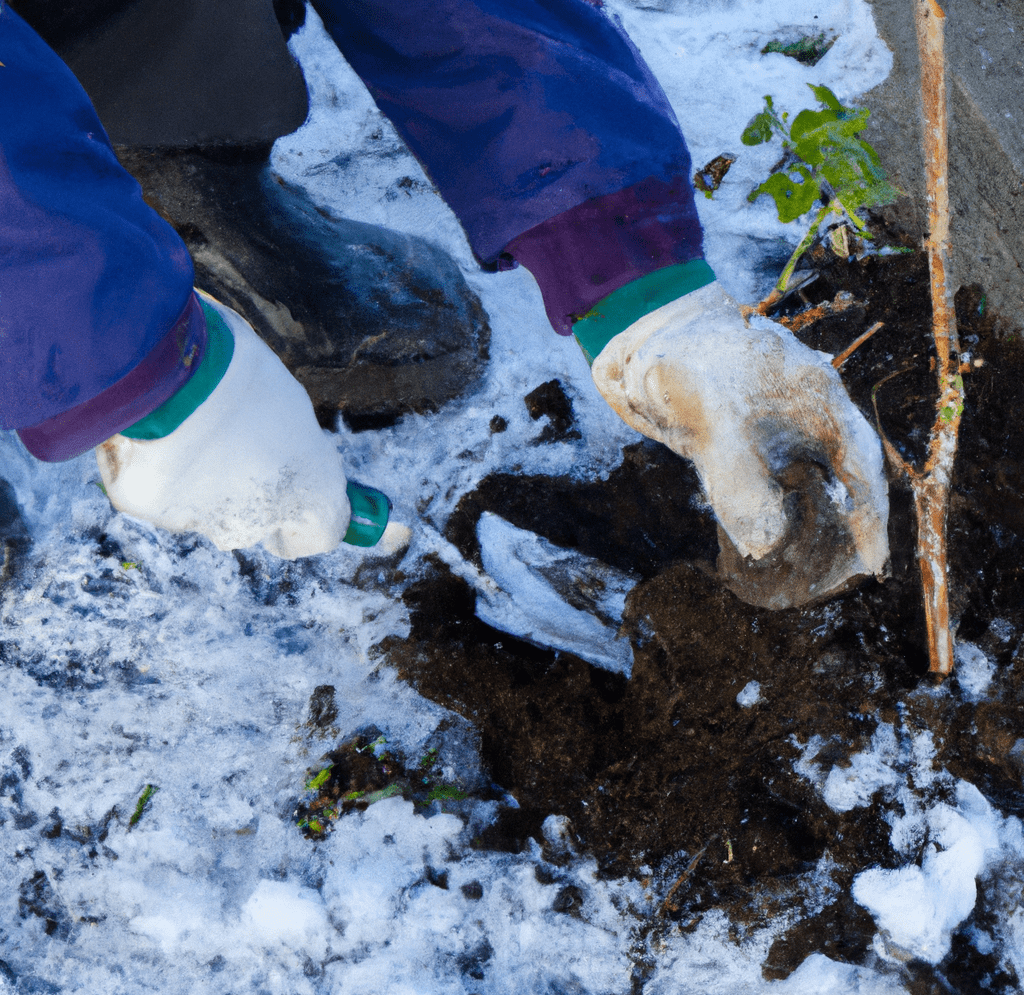
Incorporating Drought-Tolerant and Heat-Loving Plants Into Your Garden
Gardening in extreme temperatures is getting harder to do with every heatwave and drought that comes your way. Extreme heat brought on by seasonal fluctuations makes it challenging to cultivate conventional plants.
Include drought-tolerant and heat-loving plants in your garden to maintain it flourishing under these conditions. These plants are well suited for gardening in hot, dry locations since they can tolerate extended periods without water and extreme temperatures.
Drought-tolerant and heat-loving plants can be a great addition to your garden, regardless of whether you live in a warm, arid environment or only experience hot summers. These plants are low care, need little watering, and can resist the abrasive elements of the shifting weather. Succulents, cacti, yucca, aloe, and numerous kinds of wildflowers are some examples of heat- and drought-tolerant plants. These plants are adaptable options for any garden design because of their wide range of shapes, sizes, and colors.
Watering and Irrigation
Gardening in extreme climates still requires watering and irrigation. When choosing a watering and irrigation strategy for your garden, it’s crucial to take into account variables like temperature, climate, and season.
Low temperatures decrease plant growth, which lowers their need for water. High temperatures can increase the rate of water evaporation and the requirement for water in plants. Taking care of plants so they can develop and thrive while gardening can be a tough and rewarding pastime.
You can develop a watering and irrigation strategy that works for your garden if you are aware of its requirements. Your garden’s water requirements are significantly influenced by the climate in your location. For instance, compared to cooler, wet climes, hot, dry climates will necessitate more regular watering. The amount of water your garden needs might also vary by season. Plants may need to be watered more frequently in the hot summer months than they might in the cooler ones.
Strategies for Conserving Water in Extreme Climates
When gardening in extreme climates, here are our tips regarding water conservation:
- Effective soil preparation: Water can be held in the soil for extended periods of time, lowering the frequency of irrigation.
- Plant Selection: It’s important to pick plants that are appropriate for your climate. Native plants that can withstand drought can survive with little water, which minimizes the need for irrigation.
- Temperature Control: In hot climates, employing reflective mulch and shady plants can assist lower the temperature and water evaporation. Water loss due to evaporation can also be decreased by watering in the early morning or late evening when temperatures are cooler.
- Climate awareness: By being aware of the local weather patterns and rainfall totals, you may create a watering schedule that is adapted to your individual requirements.
Techniques for Irrigation in Hot, Dry Conditions
In hot and dry areas, irrigation is crucial for gardening, especially in the hot season when temperatures are high and plant water consumption is at its highest. When gardening in extreme climates, keep the following irrigation tips in mind:
- Drip irrigation: Using drip irrigation, water is delivered directly to plant roots, minimizing water loss due to evaporation and runoff. You can water your plant precisely and effectively using drip irrigation systems by setting timers to supply water at predetermined intervals.
- Mulching: Covering the soil’s surface with organic material like leaves, straw, or wood chips will assist the soil to retain moisture and lower evaporation. This is particularly helpful in hot, arid locations where the soil can quickly dry out.
- Shading: By giving your plants shade, particularly during the hottest portion of the day, you can lessen the amount of water they lose through transpiration. This can be accomplished by covering the garden with shade cloth or other materials.
- Correct watering: It’s crucial to water your garden sparingly and deeply. This entails providing the soil adequate time to absorb the water and letting plant roots penetrate the soil in search of hydration. Water-logged roots can result from overwatering, which can be equally as harmful as underwatering.
Using Mulch and Other Soil-Moisture Retention Methods
A layer of organic or inorganic material is added to the soil’s surface as part of the gardening method known as mulching, which helps the soil retain moisture and control temperature and is important in gardening in extreme climates.
Gardeners can maintain ideal soil moisture levels and promote healthy plant growth by utilizing mulch and other soil-moisture retention techniques. Utilizing drought-tolerant plants, setting up irrigation systems, and enhancing soil structure and water-holding capacity with compost and other organic amendments are additional techniques for retaining soil moisture in addition to mulching.
Protection From Heat and Cold
Gardening in extreme climates means you’re dealing with hot and cold weather. Here’s what you need to remember:
- Watering: Adequate watering is one of the most crucial measures in preserving your plants from heat and cold. Make sure to routinely and thoroughly water your plants, especially during dry spells and warm weather. This will lessen water stress and keep the soil hydrated.
- Mulching: Surrounding your plants with a layer of mulch can also assist to shield them from heat and cold. Mulch aids in controlling soil temperature by protecting roots from freezing in the winter and keeping moisture in the summer.
- Heat protection: Consider using shade cloth to protect your plants if you reside in a location with the intense summer heat. Most garden centers and hardware stores carry shade fabric.
- Frost protection: If you reside in a region with harsh winters, you might need to take additional precautions to save your plants. You can protect your plants by covering them with frost fabric or bringing them inside on very chilly nights.
- Grouping: Plants can be protected from heat and cold by being grouped together. Plants can shade one another and assist control temperature when they are gathered together.
Techniques for Protecting Plants From Frost and Cold Temperatures
Protecting plants from frost and freezing temperatures can be difficult when gardening in areas with harsh winter conditions. Gardening in extreme climates may mean you have to do the following:
- Wrap plants in frost cloths or blankets.
- Potted plants should be moved indoors or to a protected space.
- To protect the roots of plants, mulch the area surrounding their bases.
- Before a hard freeze, moisten the ground by watering the plants and the surrounding soil.
- Around the base of tender plants, add extra insulation like straw or leaves.
Building Greenhouses or Other Structures to Create a More Controlled Environment
Many gardeners choose to construct greenhouses or other buildings to establish a more controlled environment as a means of overcoming these challenges. In order to control temperature, light, and other growing variables, greenhouses were created.
They enable year-round gardening, no matter the season, and allow gardeners to cultivate plants that would often not flourish in their local climate. Gardeners can lengthen the growing season and provide the best circumstances for their plants to thrive by regulating the temperature.
Bottom Line: Gardening in Extreme Climates
Gardening is a joyful and gratifying hobby, but gardening in extreme climates makes this a little more challenging. In order to have success in the garden, it is crucial to comprehend the local environment and make appropriate plans. There is always something new to learn and experiment with whether you are an experienced gardener or are just getting started. So, take on the task and enjoy learning about growing in harsh environments!
FAQs on Gardening in Extreme Climates
What does gardening in extreme climates include?
Growing plants in regions with unfavorable temperatures, soil conditions, and other conditions are known as gardening in extreme climates. The extreme conditions seen in deserts, tundras, and high-altitude areas are a few examples.
What challenges do gardeners who live in harsh regions face?
Gardening in extreme climates presents a variety of challenges, including the rapid dehydration of plants in hot, dry climates, the freezing of the soil in very cold climates, which makes it difficult for roots to take hold, and the difficulty of maintaining plant hydration when there is insufficient water available.
Why is gardening necessary in harsh climates?
There are many reasons why gardening in harsh climates is important, including developing a sense of connection to nature, bringing vegetation to desert areas, supplying fresh produce to places where there is a food crisis, and fostering a sense of community among gardeners.
What factors should you take into account when planting in harsh climates?
It’s crucial to take the temperature, the garden, the climate, and the season into account while gardening in harsh climes. To characterize the climate, one should additionally consider the region’s average temperature range, rainfall patterns, and the length of each season.
How do you explain your harsh climate?
Knowing the local climate, including the range of typical temperatures, the frequency of rainfall, and the length of each season, is essential to understanding your extreme climate. Additionally, you can pinpoint the exact weather patterns and circumstances that have an impact on gardening in your region.
What is hardscaping, and how can it be used to grow plants in harsh climates?
Hardscaping is the process of building garden features and structures out of hard materials like stone, concrete, and brick. It helps to protect plants from climatic fluctuations, wind, and rain, increasing their chances of surviving. Hardscaping can also be utilized to create microclimates inside the garden to support the growth of plants that wouldn’t ordinarily thrive there.
What kinds of plants are best for gardening in the sweltering heat?
Plants that thrive in heat and drought are ideal for gardening in hot, arid locations. These plants can withstand prolonged dry spells and high temperatures. Succulents, cacti, yucca, aloe, and wildflowers are a few examples.
What impact do temperature, climate, and season have on irrigation and watering practices in gardens?
A garden’s weather and environment have a big impact on how much water the plants need. Low temperatures slow the growth of plants, which reduces their thirst for water. High temperatures, on the other hand, accelerate the rate of water evaporation and raise the requirement for water in plants. The frequency of watering also depends on the season, with hotter summer months requiring more frequent watering than cooler ones.
What are some methods for water conservation in harsh climates?
A few strategies that can aid in water conservation and resource optimization in arid conditions include effective soil preparation, wise plant selection, temperature control, and climate awareness. Some water-saving techniques include using shady plants and reflecting mulch, planting native plants that can resist drought, and developing a watering schedule based on regional weather patterns.
In hot, dry conditions, how can irrigation be done effectively?
Irrigation is vital for gardening in hot, dry conditions. Drip irrigation, mulching the topsoil, and watering in the early morning or late evening when temperatures are cooler are some efficient methods for watering the garden in such circumstances.


